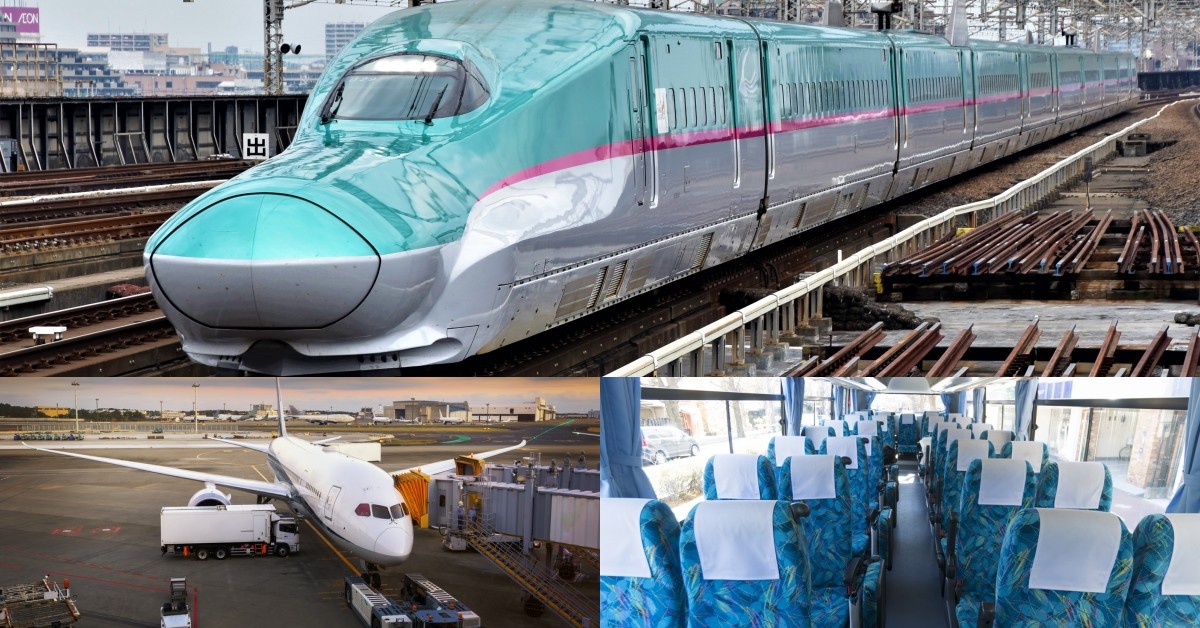
The Tohoku region, which occupies about 20% of Japan's total area, is rich in historical sites and natural scenery.
The Tohoku region refers to an area collectively known as the six prefectures from the north: Aomori, Akita, Iwate, Yamagata, Miyagi, and Fukushima. However, as of December 2023, from most countries to the Tohoku region, no prefecture has regular international flights, it is common to travel to the destination via Tokyo by JR Shinkansen, airplane, or express bus.
In this article, we compare the three modes of transportation mentioned above and also introduce some tips for traveling more economically. Why not use it as a reference for your round trip?
※All information appearing in this article is as of December 2023. Please check the official website for the latest information.
※The general fares for each domestic route are the lowest prices until September 2024, as of the survey on December 5, 2023. They may vary depending on the time.
JR Shinkansen VS Airplane VS Express Bus. Comparing modes of transportation from Tokyo to the Tohoku region
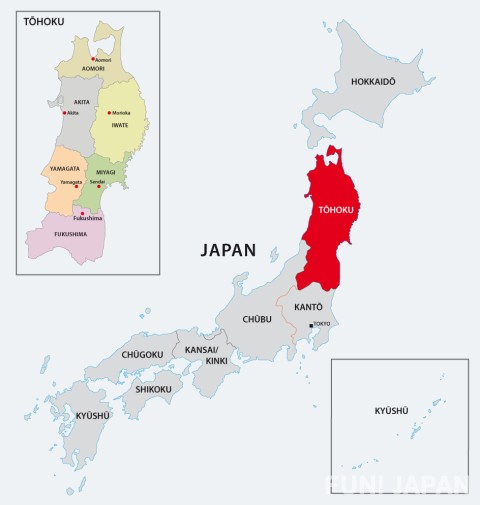
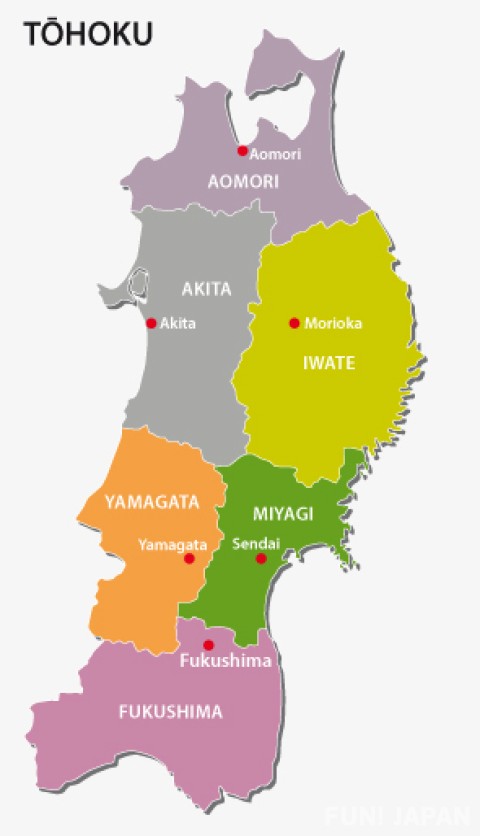
If you are moving from Tokyo to Tohoku, first understand the characteristics of the three main modes of transportation: JR Shinkansen, airplanes, and expressway buses.
Also, even when we say "Tohoku Region" as whole, the recommended mode of transportation still varies by prefecture. Plan your trip according to the departure and arrival locations, travel time, and budget.
1. JR East Shinkansen (Tohoku Shinkansen, Akita Shinkansen, Yamagata Shinkansen)
Examples of departure and arrival locations in Tokyo: Tokyo Station, Ueno Station
The Shinkansen connecting Tokyo and the Tohoku region consists of six types: the Tohoku Shinkansen ("Hayabusa※", "Hayate※", "Yamabiko", "Nasuno"), the Yamagata Shinkansen ("Tsubasa") and the Akita Shinkansen ("Komachi※"). The greatest appeal of these trains is undoubtedly the short travel time from the city center to each prefecture and the high number of daytime services. Even in Aomori, located at the northernmost tip of Honshu, you can arrive in just about 3 hours by Shinkansen from Tokyo.
※All cars are reserved seats
It's important to note that the Tohoku Shinkansen has different stops and fares depending on the train. To ride a train with all reserved seats, you need to reserve your ticket in advance at the Midori no Madoguchi or designated ticket vending machines.
2. Airplanes (JAL, ANA)
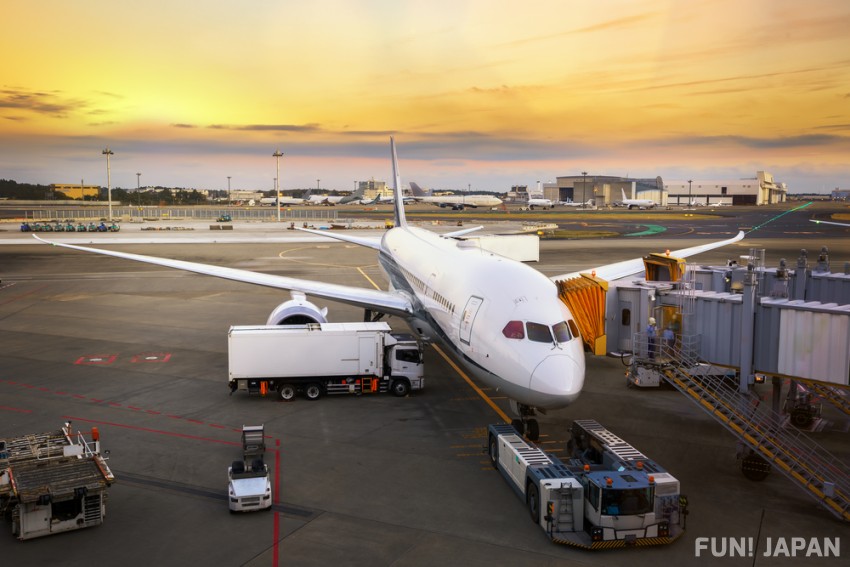
Example of departure and arrival location in Tokyo: Haneda Airport (HND)
※There are no domestic flights between Narita International Airport (NRT) and the Tohoku region
※There are also no domestic flights from Haneda Airport to Iwate, Fukushima, and Miyagi
As of December 2023, the only airlines operating domestic flights between Tokyo and the Tohoku region are JAL (Japan Airlines) and ANA (All Nippon Airways). Although there are no routes operated by low-cost carriers (commonly known as "LCCs"), you may be able to travel more affordably than by Shinkansen if you take advantage of the early purchase discount plans and discount fares for foreign tourists offered by the above two companies.
Please note that there are also prefectures where there are no flights departing from and arriving in Tokyo, so be sure to check the route in advance before departure.
3. Expressway Bus (Overnight Bus)
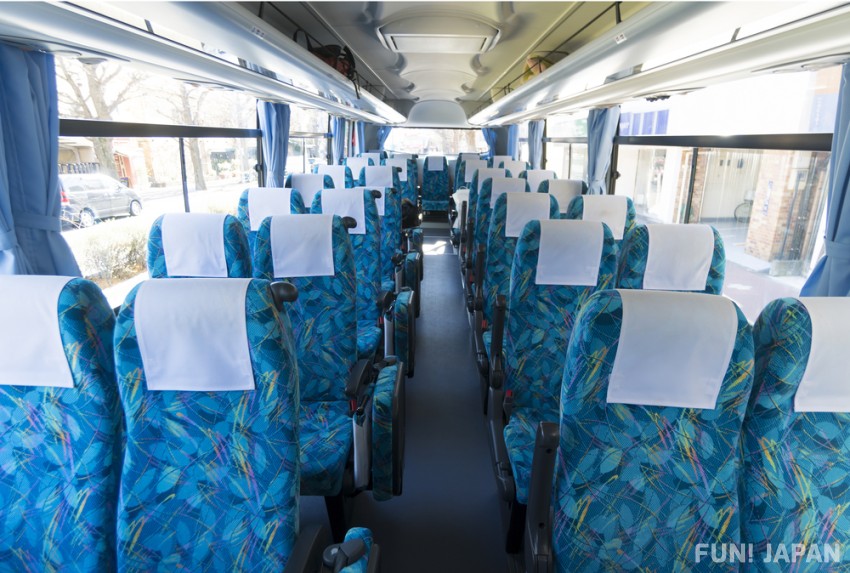
Examples of departure and arrival locations in Tokyo: Tokyo Station, Ikebukuro Station, Busta Shinjuku, etc.
The expressway bus from Tokyo to the Tohoku region typically departs from the city late at night and arrives at its destination the following morning. The fare varies depending on the weekend, off-peak season, and peak season, but it is generally cheaper than the JR Shinkansen or airplane, making it a recommended mode of transportation for those who want to keep their travel expenses low.
On the downside, the travel time is long. To reduce fatigue, it is recommended to choose a vehicle with a relatively wide 3-row seat.
Summary of transportation from Tokyo to Aomori: What is the travel time and fare?
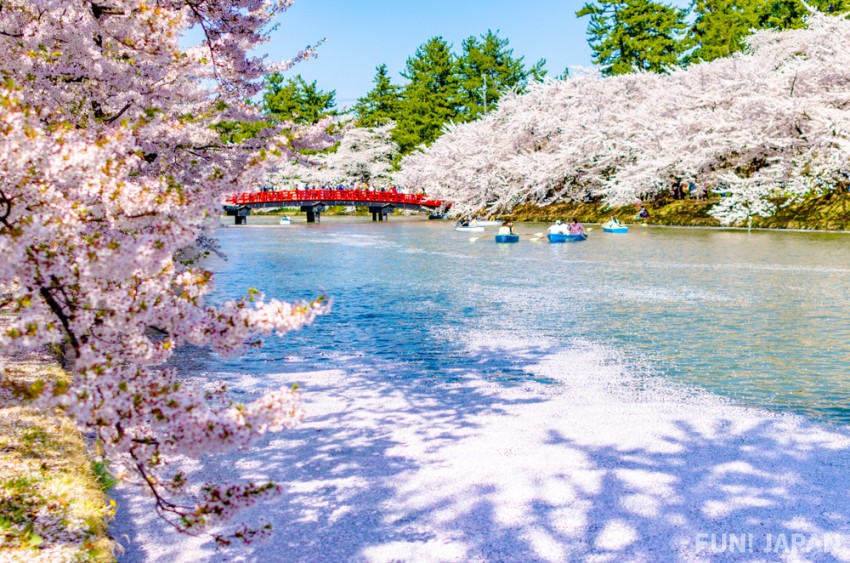
Tohoku Shinkansen ("Hayabusa", "Hayate") | Airplane (JAL) | Expressway Bus | |
| Departure and arrival within the prefecture | Shin-Aomori Station, | Aomori Airport (AOJ), | Aomori Station, |
| Travel Time Example | 【Tokyo Station to Shin-Aomori Station】 【Tokyo Station to Hachinohe Station】 | 【Haneda Airport to Aomori Airport】 ※Approximately 35 minutes to Aomori Station by JR Tohoku Bus 【Haneda Airport to Misawa Airport】 ※Approximately 55 minutes to Hachinohe Station by airport shuttle bus | 【Tokyo Station to Aomori Station】 【Busta Shinjuku to Hirosaki Station】 |
| General fare example | 【Tokyo Station to Shin-Aomori Station】price example | 【Haneda Airport to Aomori Airport】 【Haneda Airport~Misawa Airport】 | From approximately 4,600 yen |
The main gateways to Aomori are Shin-Aomori Station and Hachinohe Station, where the Tohoku Shinkansen stops, and the two airports, Aomori Airport in the central part of the prefecture, Aomori City, and Misawa Airport in the southeastern part, Misawa City.
Flights from both airports to Haneda Airport operate daily, and it takes about an hour and a half from Tokyo. However, when you include the time for boarding procedures and travel time to the city, there is not much difference in the time required for airplanes and Shinkansen. It would be a good idea to choose your mode of transportation according to your travel schedule and budget.
Recommended Tourist Spots & Activities in Aomori
- Relax in Aomori’s Amazing Onsen
- Be Amazed by Aomori’s Autumn Foliage
- Escape to Aomori’s Unique Secluded Hot Springs
- 【47 Prefecture's of Japan: Aomori edition】Aomori citizens are patient and love sweets! What are the prefectural characteristics created by one of the snowiest regions in Japan?
Summary of Transportation from Tokyo to Akita: What is the Required Time and Cost?
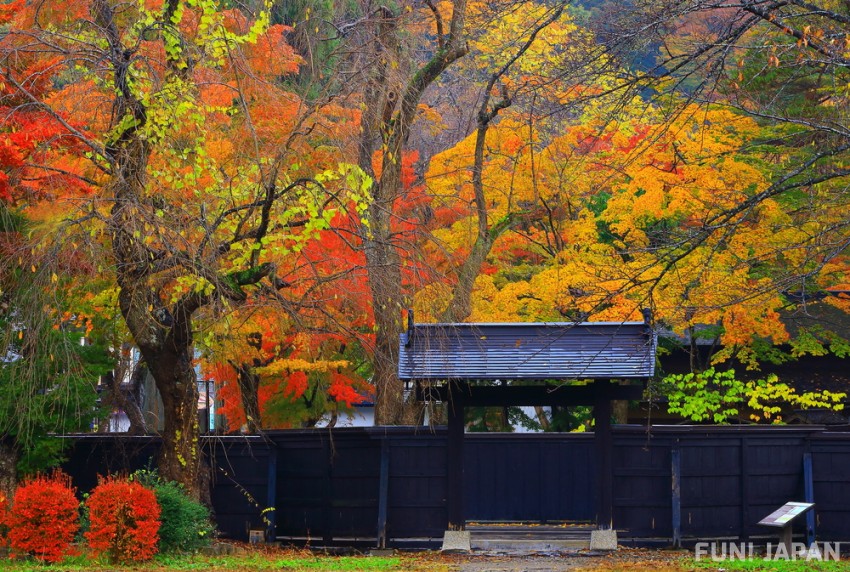
Akita Shinkansen ("Komachi") | Airplane (JAL, ANA) | Expressway Bus | |
| Departure and arrival within the prefecture | Akita Station, | Akita Airport (AXT) *Only ANA flights | Akita Station, |
| Travel Time Example | 【Tokyo Station to Akita Station】 | 【Haneda Airport~Akita Airport】 ※Approximately 40 minutes to Akita Station by limousine bus 【Haneda Airport~Odate-Noshiro Airport】 ※Approximately 1 hour to Odate Station by limousine bus | 【Tokyo Station~Akita Station】 【Busta Shinjuku~Omachi Station】 |
| General fare example | 【Tokyo Station to Akita Station】Price Example | 【Haneda Airport to Akita Airport】 【Haneda Airport to Odate-Noshiro Airport】 | From approximately 5,500 yen |
We recommend using the Shinkansen or airplane for travel from Tokyo to Akita.
The Akita Shinkansen has four stops within the prefecture, making it convenient for sightseeing in Kakunodate, Omagari, and the Lake Tazawa area. On the other hand, JAL and ANA operate daily flights from Haneda Airport to Akita Airport in central Akita City (nine flights per day in total between the two airlines) and to Odate-Noshiro Airport in northern Akita City (three flights per day by ANA only).
Among the Tohoku region, the number of flights departing and arriving at Haneda is the highest, so it is recommended to use an airplane if you are going directly from Haneda Airport to Akita.
Here are some recommended sightseeing spots and activities in Akita
- 【Tohoku】Let's play with "Akita Inu", who is the main character of Hachikō the faithful dog, in Odate City, Akita!
- Where is the Little Kyoto of Tohoku? Let's Go to Kakunodate in Akita!
- Where is the Deepest Lake in Japan? It is Lake Tazawa in Akita!
- What are the Highlights of Akita Kanto Festival?
Summary of transportation from Tokyo to Iwate: What are the travel times and fares?
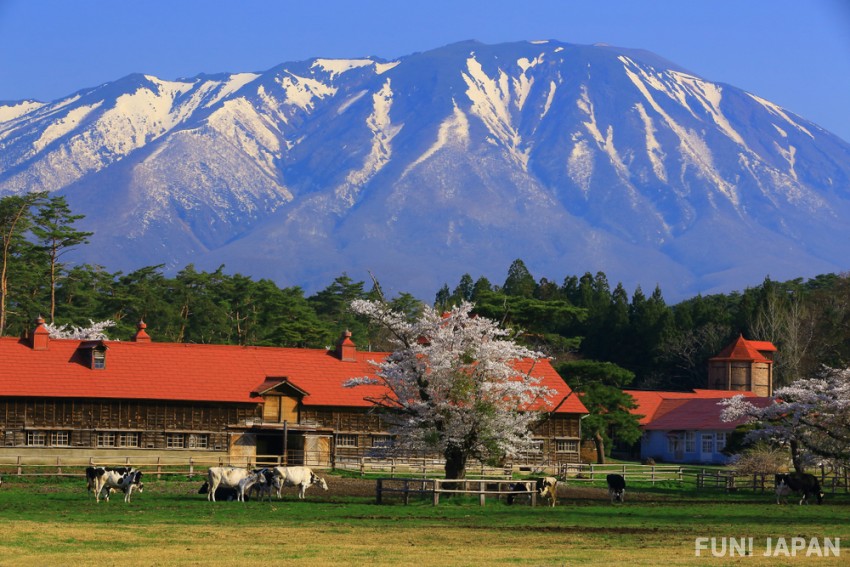
Tohoku Shinkansen ("Hayabusa", "Hayate", "Yamabiko") Akita Shinkansen "Komachi" | Expressway Bus | |
| Departure and arrival within the prefecture | Morioka Station, | Morioka Station, |
| Travel Time Example | 【Tokyo Station to Morioka Station】 | 【Busta Shinjuku to Morioka Station】 |
| General fare example | 【Tokyo Station to Morioka Station】price example | From approximately 4,300 yen |
Iwate's only airport, Iwate Hanamaki Airport (HNA), does not have direct flights to and from Tokyo. Therefore, the only way to get to Morioka Station and Ichinoseki Station, which are tourist bases in Iwate from Tokyo, is by Shinkansen or expressway bus.
The Shinkansen is significantly faster than the expressway bus, so if you value comfort, you should use the Shinkansen.
Recommended tourist spots and activities in Iwate are as belows
- Let's enjoy nature in Koiwai Farm, Iwate Prefecture!
- The Magnificent Natural and Historical Spots in Morioka, Japan
- Where is the Famous Cherry Blossom Spot in Japan? Kitakami in Iwate!
- Two Amazing Resort Hotels and Hot Springs in Iwate Prefecture
- Iwate Farming: Fruit Picking Experiences to Remember
Summary of transportation from Tokyo to Yamagata: What is the travel time and cost?
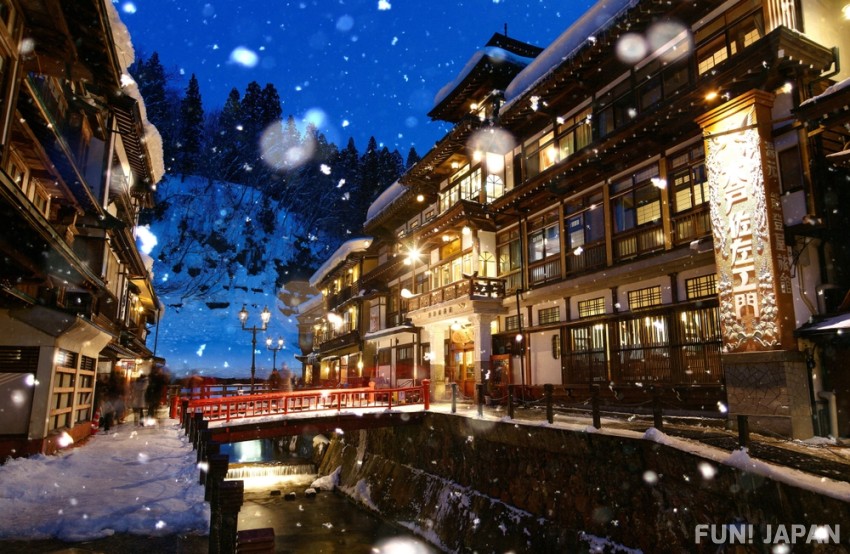
Yamagata Shinkansen (Tsubasa) | Airplane (JAL) | Expressway Bus | |
| Departure and arrival within the prefecture | Yamagata Station, | Yamagata Airport (GAJ) | Yamagata Station, |
| Travel Time Example | 【Tokyo Station to Yamagata Station】 | Approximately 1 hour ※Approximately 35 minutes to Yamagata city by airport shuttle | 【Busta Shinjuku to Yamagata Station】 |
| General Fare Example | Price examples for 【Tokyo Station to Yamagata Station】 | From approximately 9,170 yen | From approximately 3,900 yen |
There are various ways to get to Yamagata Station, the gateway to Yamagata from Tokyo, such as the Yamagata Shinkansen or the airport shuttle from Yamagata Airport to the city. However, as there is only one flight departing and arriving at Haneda Airport each morning and evening, it might be easier to plan your trip using the Shinkansen, which operates about once an hour.
In addition to express buses that run directly from Tokyo to popular tourist destinations such as Zao Onsen and Ginzan Onsen, there are also sightseeing buses and shared taxis that operate from Yamagata Airport.
Here are some recommended tourist spots and activities in Yamagata
- Yamagata's top sights, locations and gourmet foods! What to see and where to go?
- Ginzan Hot Springs A Nostalgic Hot Spring Town that Represents Yukiguni Yamagata
- Yamadera Temple in Japan, with 1,000 Stone Steps to Climb
- What is the Dewa Sanzan Pilgrimage in Yamagata, Japan?
- Zao - A tourist area that focuses on the Zao mountain range which was chosen as one of Japan’s 100 famous mountains
Summary of transportation from Tokyo to Miyagi: What is the required time and cost?
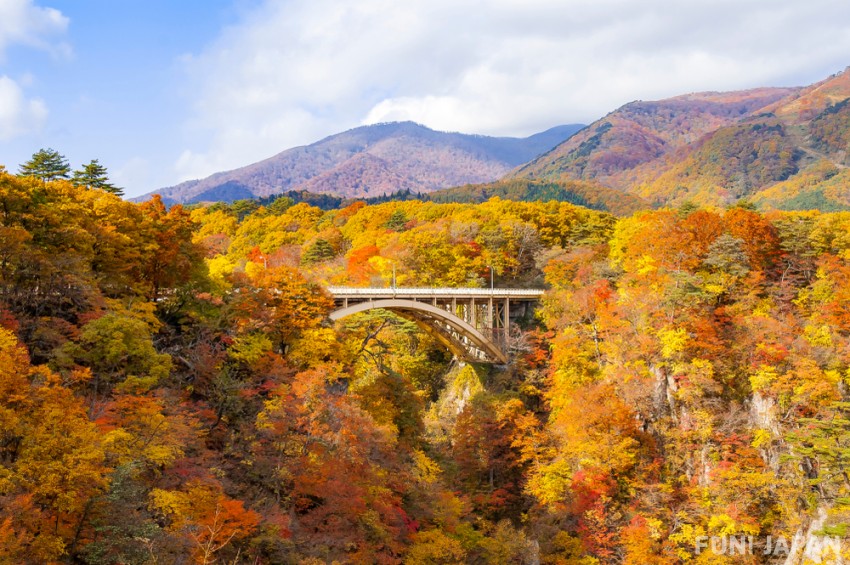
Tohoku Shinkansen ("Hayabusa", "Hayate", "Yamabiko"), Akita Shinkansen "Komachi" | Expressway Bus | |
| Departure and arrival within the prefecture | Sendai Station, ※The Tohoku Shinkansen "Hayabusa" and "Hayate", and the Akita Shinkansen "Komachi" do not stop at Shiroishi-Zao Station | Sendai Station, |
| Travel Time Example | 【Tokyo Station to Sendai Station】 | 【Busta Shinjuku to Sendai Station】 |
| General Fare Example | 【Tokyo Station to Sendai Station】Price Examples ※These are the fares for using the Tohoku Shinkansen "Hayabusa" or the Akita Shinkansen. | From approximately 3,000 yen |
There are no domestic flights to and from Tokyo to Sendai Airport (SDJ), so when traveling to Miyagi, the main means of transportation are the Shinkansen or expressway buses to Sendai Station, the largest terminal station in the prefecture.
The high-speed bus to Sendai not only operates overnight, but also departs during the day and arrives in the evening or at night. It's attractive for those with time to spare, as it can be used at a reasonable price from the 3,000 yen range.
Recommended tourist spots and activities in Miyagi are these
- Jozenji-dori - A Trail of Endless Zelkova Trees and the Symbol of Mori-no-Miyako
- Sendai’s Beautiful Autumn Leaf Spots
- Highlights of Matsushima: One of The Three Best Views of Japan
Summary of transportation from Tokyo to Fukushima: What is the travel time and cost?
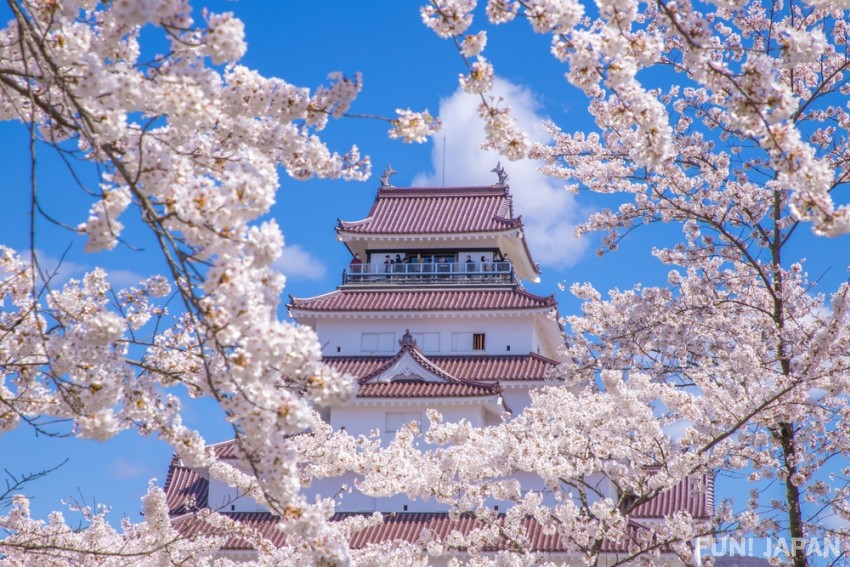
Tohoku Shinkansen ("Yamabiko", "Nasuno"), Yamagata Shinkansen 'Tsubasa' | Expressway Bus | |
| Departure and arrival within the prefecture | Fukushima Station, *The Tohoku Shinkansen 'Nasuno' does not stop at Fukushima Station | Fukushima Station, |
| Travel Time Example | 【Tokyo Station to Fukushima Station】 【Ueno Station to Fukushima Station】 | 【Busta Shinjuku to Aizu-Wakamatsu Station】 |
| General fare example | 【Tokyo Station to Fukushima Station】price example ※Fare when using Yamagata Shinkansen | From approximately 3,000 yen |
There are no direct flights from Tokyo to Fukushima Airport (FKS), so your only options are to take the Shinkansen or a highway bus.
Both the Tohoku Shinkansen and Yamagata Shinkansen can be used to access Fukushima Station from Tokyo. However, please note that the stopping stations and travel times vary depending on the service. Also, be aware that the Tohoku Shinkansen ("Hayabusa", "Hayate", "Nasuno") does not stop at Fukushima Station.
Here are some recommended tourist spots and activities in Fukushima
- 【Japan's Famous Castle Series】The filming location of the NHK Taiga drama "Yae no Sakura" - the holy land of cherry blossoms and chrysanthemums "Nihonmatsu Castle"
- The Outpost of Ouchijuku in Fukushima, Japan
If you want to travel from Tokyo to Tohoku at a great price, we recommend the JAPAN RAIL PASS or discounted airfares!
From here, we introduce the JR East JAPAN RAIL PASS and discounted airfares for foreign tourists, which allow you to travel from Tokyo to the Tohoku area at a great value. If used effectively, you can tour multiple areas efficiently and save on transportation costs.
JR EAST PASS (Tohoku area)
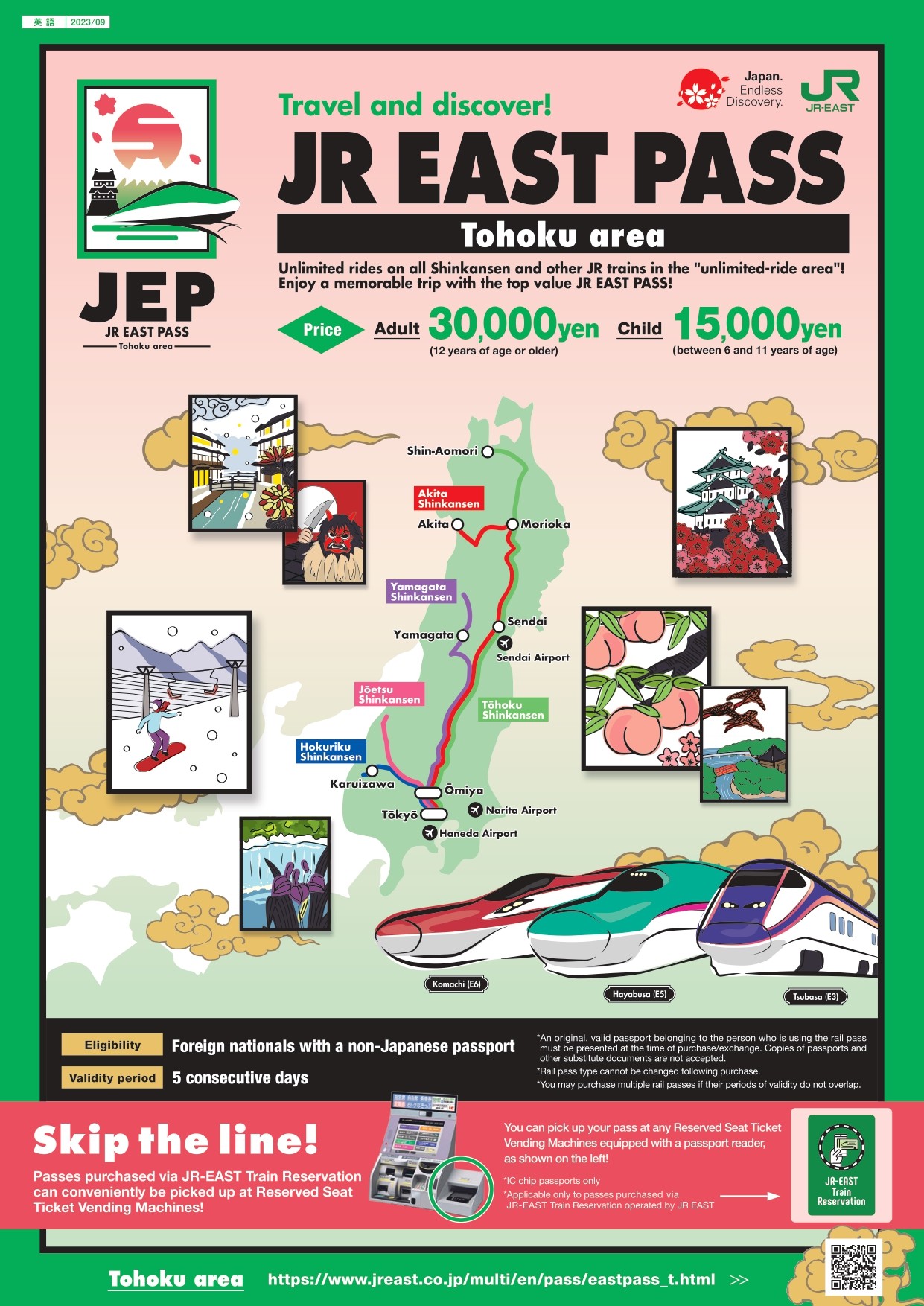
With the "JR EAST PASS (Tohoku area)" (Adults 30,000 yen, Children 15,000 yen) designed for short-term travelers, you can enjoy unlimited rides on trains and Shinkansen within the target areas, including Narita International Airport, Haneda Airport, Tokyo Metropolitan area, and the Tohoku area for 5 consecutive days!
You can purchase it through the JR East online reservation site (JR-EAST Train Reservation), domestic counters (Tokyo Station, Shinjuku Station, Shibuya Station, etc.), or overseas travel agencies. After purchase, you need to exchange it at major airports or railway stations in Japan, so don't forget to present your passport.
- Official website: https://www.jreast.co.jp/multi/en/pass/eastpass_t.html
JAL Japan Explorer Pass
The "JAL Japan Explorer Pass" sold by JAL is a discounted domestic airfare for foreign tourists visiting Japan. You can purchase one-way tickets for routes from Tokyo (Haneda Airport) to 4 airports in 3 prefectures in the Tohoku area (Aomori Airport, Misawa Airport, Akita Airport, Yamagata Airport) from 5,500 yen, so be sure to use it when traveling by plane.
- Official website: https://www.jal.co.jp/aul/en/world/japan_explorer_pass/lp/
A must-see for those who are about to travel to Japan! Useful articles about transportation
- Get around Japan affordably by highway bus or overnight bus! What are the recommended night buses that run between Tokyo and Osaka?
- There are many bus terminals around Tokyo Station! Introduction to the complex bus situation at Tokyo Station
- 8 Recommended Unlimited Ride Passes for Popular Tourist Spots from Tokyo Metropolis Area to the Suburbs
- JR Shinkansen VS Airplane VS Ferry. A Complete Guide to Transportation from Tokyo to Hokkaido
- Rental car? Free pass? Touring? A thorough explanation of the how to enjoy sightseeing in Hokkaido efficiently!
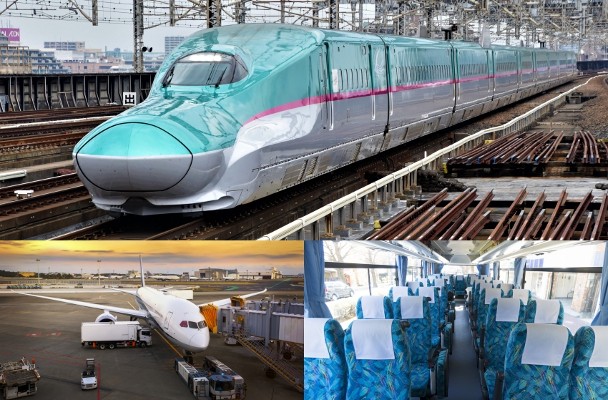
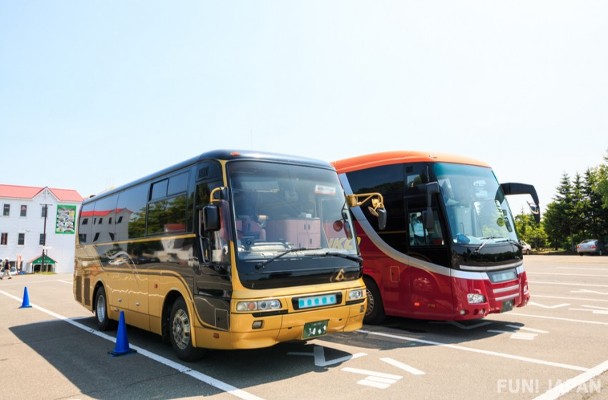



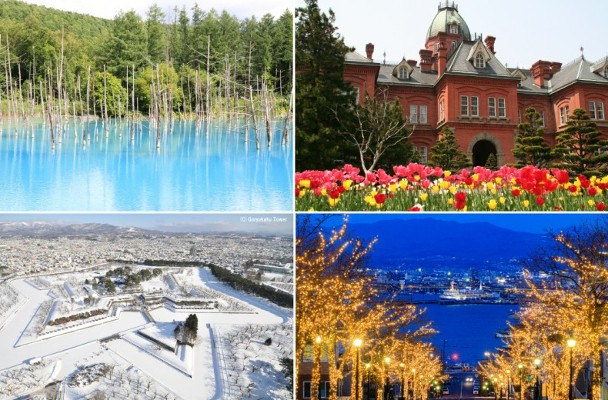
Comments